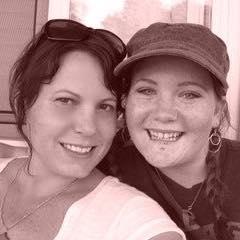The Stigma of Addiction - An Open Letter to my ER doctor, Dr. Ballhopper *
I know. Another open letter. Every time I see one, I roll my eyes. Do they really accomplish anything other than allowing the writer to vent about some perceived wrong? Do the recipients actually read them and think, “hmm, they’re right? I never looked at it that way. I should change my ways and be more understanding, less ignorant, more tolerant, more forgiving, less of a dick, etc. I really don’t know. Yet here I am writing one.
Are they passive aggressive? I mean, why not just address the letter to the person to whom it’s directed and pop it in an envelope or send it in an email? A private letter to my ER doctor. In my case, as I’m sure in many others, I want to be heard. Not just by the ER doctor, but by the many others who think like he does and who might share his views. To those who might also enjoy giving unsolicited opinions to complete strangers without having the slightest bit of awareness of their life experiences. I want people to share my outrage. Will you share my outrage? Not everyone will.
Approximately one month ago, I sliced open my knee on a piece of glass. It was bad. Gushing-blood, exposed-fat bad. Of course this happened around midnight so I had no other choice than to go to the nearest Emergency Department. No one likes to go to the ER. However, the volume of blood was alarming and my boyfriend assured me that exposed fat met the criteria for an emergency visit to the hospital. Once the decision has been made, you can only hope that you will be treated with kindness, sympathy, and professionalism upon your arrival.
As we pulled up to the entrance, my stomach sank. You see, the last time I had been in your ER, my niece had overdosed and was unconscious while machines and tubes kept her alive. The paramedics found her face down on her bedroom floor and performed CPR for 35 minutes. As a family, we gathered around her room while doctors worked frantically, and once she was stabilized we gathered around her bed. At the time, I didn’t know that stable doesn’t always mean out of the woods. I thought it meant safe and alive. None of us knew exactly what to expect, but we all feared the worst.
I’ll never forget the scene in that room. I’ll never forget the chaos, fear, sadness and confusion. I’ll never forget that particular room. So as the unfriendly triage nurse led me down the hallway and stopped in front of the door to THAT room, I became light-headed. I was about to speak up, but she parted the blinds on the window to the room, peered in, and then turned away, indicating it was already occupied. On the verge of tears, all I could manage to say is “I wouldn’t have gone in there.”
I was put in the room directly next door. To my relief, the RN who took over was very sweet and compassionate. Even though I was just another bloody wound, she expressed sympathy and made me feel comfortable. Thank you, Nurse Lorena.
After waiting about 20 minutes, you finally made your entrance. You seemed nice enough at first. However, within minutes you found a way to make me feel like I made an unnecessary trip to the ER. “I probably wouldn’t have come. If you just put pressure on it and held it together for a day or so, it would have healed on its own. You’d have a much worse scar, of course, but personally I don’t care about aesthetics.” You clearly don’t care about things like infections either. Thank you for unsolicited opinion #1. Sorry to inconvenience you with my pesky flesh wound (‘tis but a scratch!). I should have just super glued the wound together and mopped up the blood that followed me around for a couple of days! ! Silly me.
Having lived 46 years without stitches, I was a little nervous. I asked you if it would hurt, if you numbed the area before sewing it together. “This is what you should be afraid of”, you said while wielding one of the largest needles I’ve ever seen, the needle that I intended on avoiding eye contact with until you sadistically held it in front of my face. Thank you for that. Thank you for telling me “it’s just a sting” when you repeatedly inserted the needle into my open wound and I cried out in pain. I guess compassion isn’t your thing.
Next out of your mouth: “You know what’s the best numbing agent? Cocaine. But we can’t use that here”. Thus began your dissertation on the wonder drug cocaine and your outrage that it is no longer legal to use medicinally. I listened with bemusement. Where was this coming from?? Just put my knee back together! After listening to you talk about a jar of cocaine that sits unused at a dentist’s office, the tedium of having it measured and monitored, the unfairness of it all, I thought I’d try to participate in this discussion. Although I wouldn’t really call it a discussion - more like a one-sided conversation, the sole purpose of which was to allow you to hear yourself talk.
“It seems like there are equally if not more dangerous drugs in the hospital than cocaine”, I said. “And certainly there is a whole class of legally prescribed drugs that are incredibly addictive and deadly.” You replied that no, cocaine was the most dangerous drug of all. By some odd coincidence, I happened to be in the middle of a book called “An Anatomy of Addiction – Sigmund Freud, William Halsted, and the Miracle Drug Cocaine.” I told you that I was reading a very interesting book about the history of cocaine and addiction. “Did you know they used to put it in Coca Cola?” you asked. Why, yes, doctor, yes I did know that. You must have missed the part where I told you I was reading about the history of cocaine. Was that all you had to offer? A well-known bit of trivia?
Then the words that made me hate you came out of your mouth. Out of nowhere, just like your cocaine diatribe. “I don’t agree that police should be required to carry Narcan.” Narcan, otherwise known as Naloxone, is a drug that blocks the effects of opioids and can save someone’s life during an overdose. Also known as the save shot. We are hearing more and more about Narcan due to the epidemic of heroin and fentanyl related overdoses across the country, of opiod and painkiller use in general. EMTs carry it, you can get it without a prescription in many places, and yes, now most police departments carry it. It’s one line of defense against the unprecedented number of deaths in this country due to overdose. Drug overdoses have outnumbered car accidents as the number one cause of accidental deaths. A sobering statistic. Not sobering enough for you, though.
“I think there should be a penalty,” you asserted.
“A penalty for what?” I asked
“For the person who receives the shot of Narcan,” you replied.
“For what?” I asked incredulously.
“For breaking the law, for using drugs. There should be a jail sentence or a fine.” you answered.
“You think they should be penalized for having their lives saved??”
My heart was pounding, my adrenaline was pumping, I was about to burst into tears. This is when I told you that my niece had overdosed and basically died in the next room a few months earlier, that the paramedics had given her two shots of Narcan at the scene to no avail. I said this was a very personal and sensitive subject. Without batting an eye, you said “oh, huh.” Not a word of sympathy. No condolences. Only disdain for just another addict.
“So you think someone should be punished because they needed an injection of a readily available drug to save their life? Sure, let’s just criminalize drug use some more since that war on drugs is working so well,” I said.
“Ah, well then just legalize it all!” you exclaimed, as you literally threw up your hands. “Just like how they’re bringing back the opium dens in California!”
What in the hell were you talking about? I assumed you were referring to safe-injection sites (also known as supervised injection sites or medically supervised injection centers) which have proven to be effective in greatly reducing and nearly eliminating overdose deaths in the countries where they exist: Switzerland, Canada, Australia, Germany, Spain, the Netherlands, Norway, Luxembourg, and Denmark. They also provide counseling and access to treatment. Opium dens? What century are you living in? Please inform yourself and read this article. You’ll learn a little bit about Narcan, as well. Seriously, read it. You’re a doctor. You should be up on these things.
http://www.msnbc.com/msnbc/analysis-amid-opioid-abuse-crisis-safe-inject...
You left the room to retrieve your instruments. The minute the door closed, I turned to my boyfriend and started crying. I came for stitches, I ended up sobbing about my niece and the callous way in which you regarded her life and death. Because here’s the thing, doc. You are a doctor. Your job is to treat, heal, and save people when you can. To do no harm. That includes addicts, or junkies as you referred to them. Your job doesn’t entail judging who is worthy of life. It doesn’t include tirades on punishment for needing a life-saving medication. Certainly not to your patients. You have no idea what people have gone through in their lives.
I’m sure that you have treated thousands of addicts and alcoholics in your lengthy career. Judging from your behavior, I’m also certain you treated them as less than human. Each addict is someone’s child, someone’s loved one. There is no stereotypical addict. Addicts are everywhere. They’re the high school cheerleader who started popping pain pills after an injury. They’re the once straight A student who thought it wouldn’t happen to them. They are our teachers, our accountants, our journalists, our dentists, our bankers, our politicians, our police officers. They are our mothers, fathers, daughters, sons, nieces, nephews, uncles, aunts, friends, and co-workers. Some are doctors, just like you. Some are Sigmund Freud. Addiction doesn’t discriminate. Neither should you.
It has been almost 5 months since my niece died. Her name is Taylor. She was 28 and has a 5-year-old autistic son and a whole lot of family and friends who loved her. You should know that. Although she had problems with alcohol since the age of 15, she wasn’t always a drug addict. Guess who her first drug pusher was? A doctor. Legal prescription drugs for an injury started her down that road. The frequency and volume of the prescriptions written for her over the years is mind-boggling and infuriating. Once she could no longer afford them, she turned to heroin. She did it for several months at the end of her life. It was cheaper and stronger. She no longer took it to get high. She was sick without it. She took it to feel normal, to get back to baseline. It’s a familiar narrative. Look no further than the frenzied marketing and over-prescribing of Oxycontin for the origins of the addiction epidemic. Once the pill mills were shut down, once the doctors were penalized for their liberal prescribing of the drug, once a prescription drug data base was established in every state and Purdue Pharma was held accountable, a new market was created. From there it snowballed into a surge in heroin use unlike any this country has ever seen.
About two weeks ago, I began to go through Taylor’s medical records from both the suburban Chicago hospital where you are employed and the methadone clinic to which she was referred. She went to the ER twice, two days in row a little over a week before she died. She was in withdrawal. She was trying to quit. She wanted to detox and go to rehab. The first time she was turned away, despite experiencing documented “moderate to severe withdrawal symptoms”. Sorry, no beds. But here’s an injection of valium to get you back on your feet again. The second time, less than 24 hours later, she was finally admitted for detox. She needed medical treatment. She was sick. Both times you were her doctor in the ER. You turned her away the first time. You were the last person to treat her while she was alive and aware and trying to get help. I can only imagine how you treated her. It makes my stomach turn.
After a detox of four days during which was pumped full of benzodiazepines, approximately every 90 minutes, she was discharged and referred to a methadone maintenance program just down the street. What’s that? Again, sorry. No beds in your on-site rehab,especially if the patient in on Medicaid. Taylor had has success with the drug Suboxone one year earlier. She had never used methadone. She was distraught because she could no longer find a doctor that was able to prescribe Suboxone for longer than the two days she needed it before starting the methadone maintenance treatment. There is a limit on how much a doctor can prescribe and not every doctor is allowed to prescribe it.
Eight days later, she was dead. Or I should say, she was brain dead. She was without oxygen for too long and would never wake up again. Her body was warm, I could feel her heartbeat, I could watch her chest rise and fall with each vent-assisted breath. I could curl her fingers around the stuffed animal we put in her hand. I could talk to her but she couldn’t hear me. She was gone. No chance of recovery.
Guess what killed her, Doctor Buttholer? It wasn’t drugs that she was taking to get high. It was a lethal combination of the drugs she was given by medical professionals during detox mixed with her increasing daily dosages of methadone. Legal drugs. Valium and Methadone. The “treatment” killed my niece. Might that change your mind about penalizing people who receive a life-saving injection of Narcan? Should it matter how or why the overdose occurred? Absolutely not. She wanted to stop, she wanted to be helped. The system failed her. Something has to change.
The change has to start with the group of people whose job involves health care and law enforcement. From the doctors who roll their eyes at another addict sitting in their ER, from the police who treat drug offenders like murderers, all the way to the 911 operators whose tone of voice changes when they hear they might be dealing with an overdose. I’m talking to you, H. Berg from DUCOM. This operator went from calm and helpful to demeaning and argumentative once she heard the word “overdose”. The caller wasn’t a drug addict, nor should it matter if he was. The caller was trying to save the life of someone who took the drugs she was instructed to take, the drugs that the doctors gave her.
I sit here and wonder what I can do to facilitate that change. I am focused and determined. Addiction needs to be viewed and treated as a medical problem. It’s isn’t a moral failing, it’s a disease. The stigma surrounding addicts and the nonchalance and condescension with which their struggle is treated is shameful. Until it affects you, until you watch a loved one fall deeper and deeper into the abyss of addiction – and dear doctor, I hope it doesn’t happen to you – you may truly never understand what it’s like. That’s why empathy and compassion are important. Perhaps this letter will help guide your future interactions with addicts. Maybe it will humanize them to you and the many others who think they get what they deserve. Taylor didn’t deserve to die. No addict deserves to die. No addict deserves to be turned away when they come seeking medical help. No addict deserves to die from “the treatment”.
Congress recently passed an opioid bill: the Comprehension Addiction and Recovery Act. The house voted 407-5 in favor of this bill. Who are the 5 assholes who voted against it? How can you be against treatment of opioid addiction and heroin misuse? What causes an individual to fight against the prevention of overdose deaths? I’ll tell you what: the stigma of addiction. I’m pretty sure I know what your vote would be, Doctor Ballhopper. Thankfully, not everyone thinks like you.
*Not his real name, but close enough. Used interchangeably with Dr. Buttholer.
















